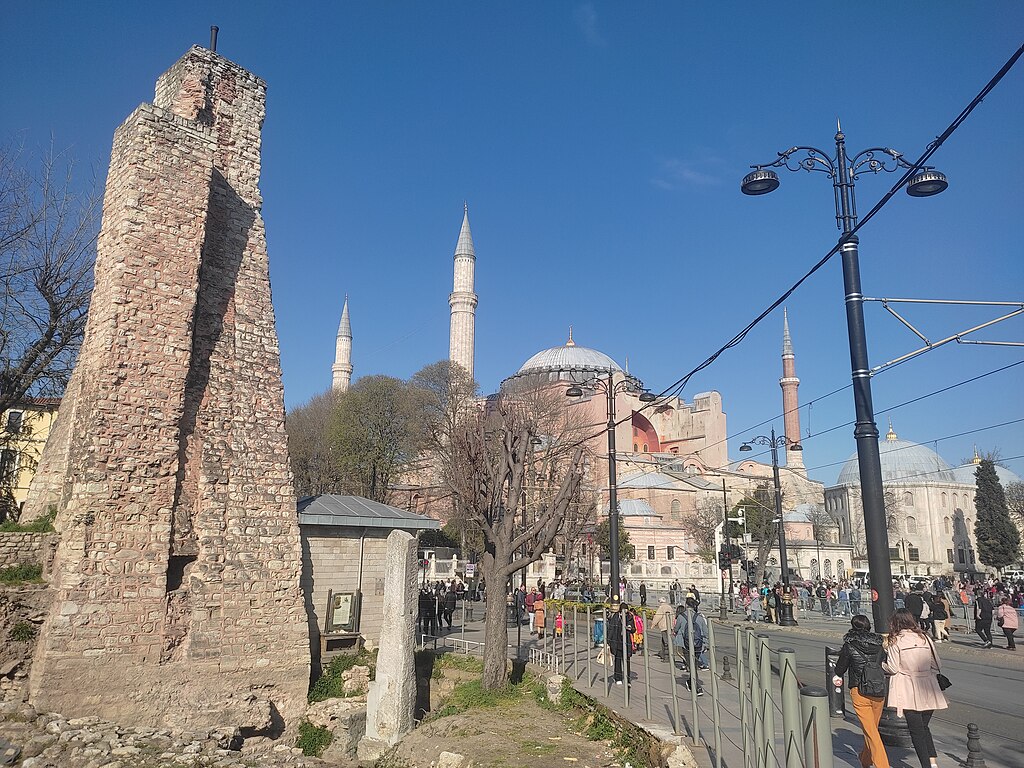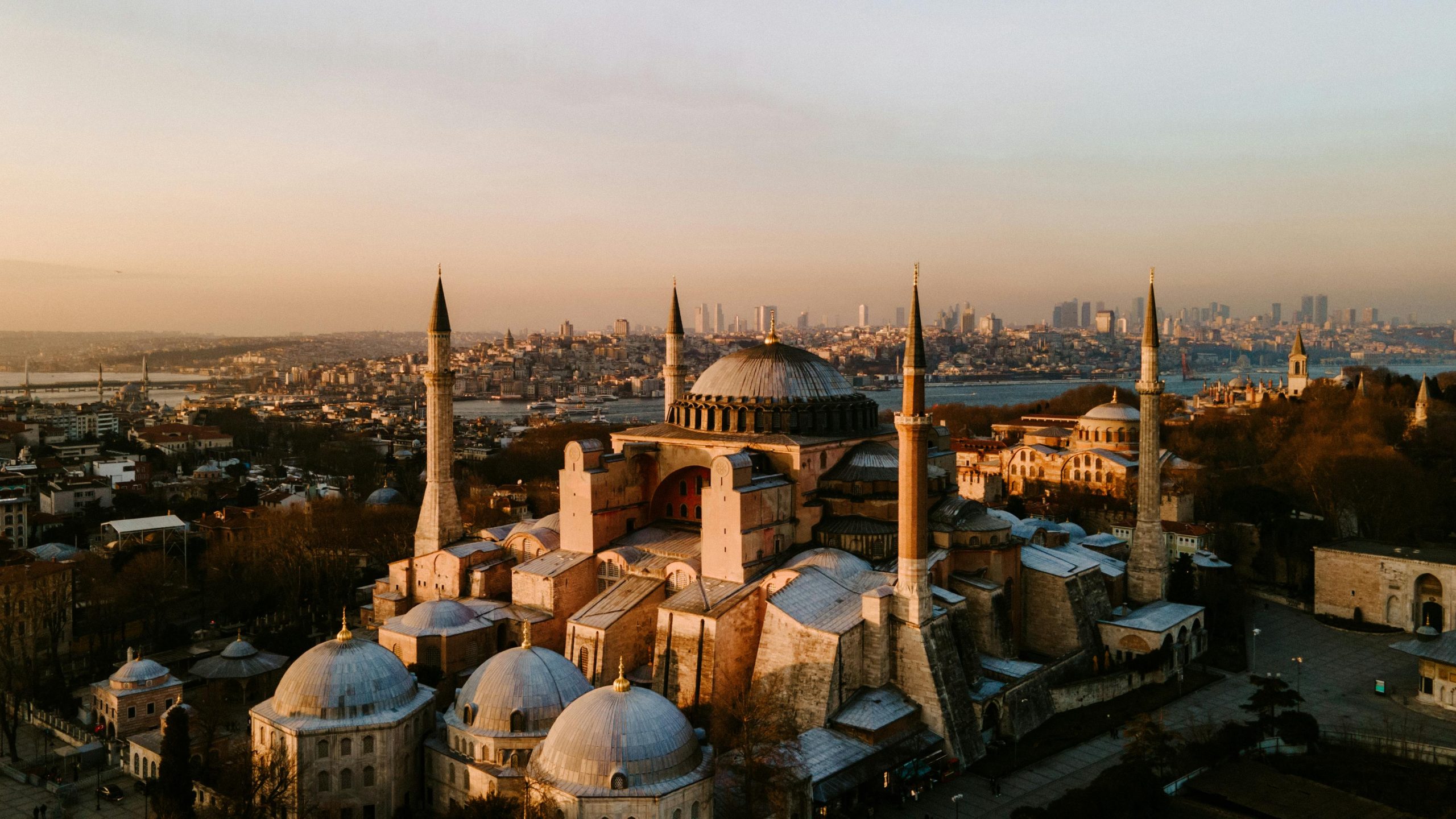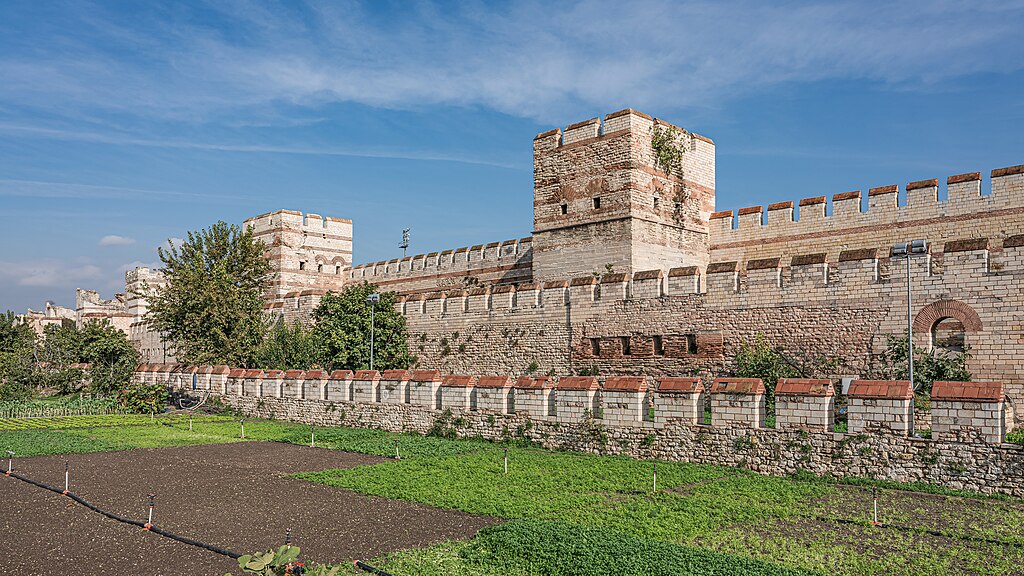Stone of Milion, Istanbul
Historic Site in Istanbul

At first glance, it might seem like just another fragment of old stone, but the Stone of Milion once marked the very center of the Byzantine world. Built in the 4th century during Emperor Constantine the Great's reign, this monument served as the empire's official zero-mile marker — the point from which distances to all major cities were measured. It was Constantinople's answer to Rome's Golden Milestone, symbolizing the city's new role as the capital of a vast and Christianized empire. Though only a small section survives today, it remains one of the must-see places in Istanbul for history lovers tracing the ancient arteries of empire.
Located near Hagia Sophia and Sultanahmet Square, the Stone of Milion is often visited on walking tours of Istanbul's Old Town, forming a quiet yet powerful reminder of how this city once set the world's standard for both distance and time.
History and Significance of the Stone of Milion
The Stone of Milion was erected in the early 4th century AD as part of the triumphal gate at the beginning of Constantinople's main thoroughfare, the Mese — the “Middle Way” that connected the imperial palace to the western gates of the city. Modeled on the Milliarium Aureum in Rome, the Byzantine version was far grander: a double-arched gateway topped by a domed canopy, adorned with statues of Emperor Constantine and his mother Helena holding a cross, flanked by the city's protective deity, Tyche.
On its base were inscribed the distances from Constantinople to major cities of the empire, making it the central reference point for the Byzantine world's vast network of roads. For centuries, it served both symbolic and practical purposes — a statement of Constantinople's supremacy and a functional marker for imperial administration and travel.
The Stone of Milion also played a role in global timekeeping. Until the late 19th century, the zero meridian — the point used for determining time zones and map coordinates — was considered to pass through Istanbul. Many maps and clocks were calibrated to the Milion's position. It was only after the 1884 International Meridian Conference that Greenwich, London, replaced it as the world's standard.
Things to See and Do at the Stone of Milion
The surviving fragment of the Stone of Milion stands quietly at the corner of Divan Yolu Avenue and Alemdar Street, near the entrance to the Basilica Cistern and Hagia Sophia. Although little of the original structure remains, the stone's historical importance makes it a rewarding stop for anyone interested in Byzantine Constantinople. Nearby information panels provide context about its original form and purpose.
Visitors can easily include the Milion in a short historical circuit along the Mese (modern Divan Yolu), tracing the ancient route toward the Forum of Constantine and the Grand Bazaar. It's also a good photo stop, especially with the Hagia Sophia domes or passing trams in the background — a fitting blend of ancient origins and modern life still radiating from the same point.
How to Get There
The Stone of Milion stands near Sultanahmet Square, just across from Hagia Sophia and a few meters from the entrance to the Basilica Cistern. The T1 tram line stops at Sultanahmet station, a two-minute walk away. For visitors arriving by train, Sirkeci railway station is around a 10-minute walk from the site. You can use the official TCDD Taşımacılık website to check schedules, compare routes, and purchase tickets for Turkey's national and regional trains operated by TCDD. For a more streamlined experience (especially if you prefer an English interface or want to compare across countries), we recommend using Omio, which allows you to easily compare prices, schedules, and book train tickets across Turkey and the rest of Europe — all in one place. Drivers will find limited parking around Sultanahmet, though several small paid car parks are available along Kennedy Avenue. If you are looking to rent a car in Turkey I recommend having a look at Discover Cars, first, as they compare prices and review multiple car rental agencies for you.
Practical Tips on Visiting the Stone of Milion
- Best time to visit the Stone of Milion: Morning or late afternoon when Sultanahmet Square is less crowded.
- Entrance fee in Euros: Free.
- Opening hours: Accessible at all times as part of a public area.
- Official website: Not applicable.
- How long to spend: 10–15 minutes.
- Accessibility: Fully accessible with level pavements.
- Facilities: Cafés, rest areas, and shops nearby.
- Photography tip: Frame the stone with Hagia Sophia or passing trams for contrast between past and present.
- Guided tours: Included in many historical and Byzantine walking tours.
- Nearby food options: Traditional Turkish restaurants and cafés in Sultanahmet Square.
Is the Stone of Milion worth visiting?
Yes — though small and easily overlooked, the Stone of Milion marks one of the most historically significant points in Istanbul. It represents not just the heart of Byzantine Constantinople but the symbolic center of an empire that once defined the world's geography. For those walking through the Old City, it's one of the top sights in Istanbul to pause at and reflect on how all roads — and once all time — led to here.
FAQs for Visiting the Stone of Milion
Is the Stone of Milion easy to find?
Yes, it's located beside the Basilica Cistern entrance near Hagia Sophia, along Divan Yolu Avenue.
Can I touch the monument?
Yes, it's freely accessible, though visitors are encouraged to treat it with care.
What did the original structure look like?
It was a domed double arch adorned with statues of Constantine, Helena, and Tyche, far larger than the surviving remnant.
Is there an entrance fee?
No, it's a public monument and free to visit.
Was it really once the world's time center?
Yes, before Greenwich was adopted in 1884, the zero meridian for maps and timekeeping was considered to pass through Istanbul.
Nearby Attractions to the Stone of Milion
- Hagia Sophia – The city's legendary Byzantine basilica-turned-mosque, just across the street.
- Basilica Cistern – A haunting underground reservoir from the 6th century.
- Sultanahmet Square – The historic site of the Hippodrome of Constantinople.
- Blue Mosque – The city's most iconic mosque with six minarets and blue-tiled interiors.
- German Fountain – A neo-Byzantine monument gifted by Kaiser Wilhelm II at the north end of the square.
The Stone of Milion appears in our Complete Guide to Visiting Istanbul!
This website uses affiliate links which may earn a commission at no additional cost to you!
Visiting Stone of Milion
Nearby Attractions
- Basilica Cistern (0.0) km
Historic Building in Istanbul - Sultan Ahmet Park (0.1) km
Park in Istanbul - Hurrem Sultan Hamam (0.1) km
Baths and Historic Building in Istanbul - German Fountain (0.1) km
Fountain in Istanbul - Hagia Sophia (0.2) km
Cathedral and Mosque in Istanbul - Sogukcesme Street (0.2) km
Street in no_link - Sultanahmet Square (0.3) km
Square in Istanbul - Arasta Bazaar (0.3) km
Bazaar in Istanbul - Blue Mosque (0.3) km
Mosque in Istanbul - Obelisk of Theodosius (0.3) km
Historic Site in Istanbul


